Related Research Articles
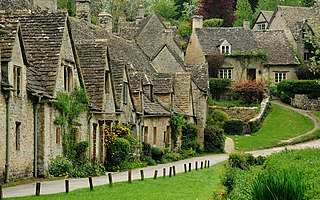
Gloucestershire is a ceremonial county in South West England. It is bordered by Herefordshire to the north-west, Worcestershire to the north, Warwickshire to the north-east, Oxfordshire to the east, Wiltshire to the south, Bristol and Somerset to the south-west, and the Welsh county of Monmouthshire to the west. The city of Gloucester is the largest settlement and the county town.
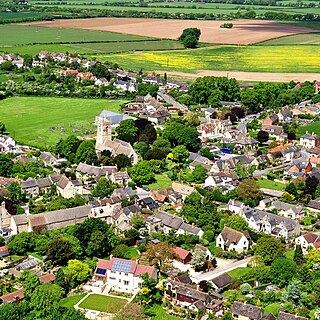
Oxfordshire is a ceremonial county in South East England. The county is bordered by Northamptonshire and Warwickshire to the north, Buckinghamshire to the east, Berkshire to the south, and Wiltshire and Gloucestershire to the west. The city of Oxford is the largest settlement and county town.

The Forest of Dean is a geographical, historical and cultural region in the western part of the county of Gloucestershire, England. It forms a roughly triangular plateau bounded by the River Wye to the west and northwest, Herefordshire to the north, the River Severn to the south, and the City of Gloucester to the east.
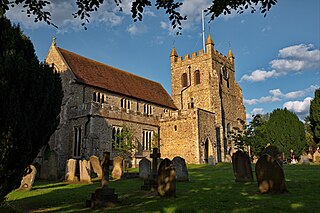
Wye is a village and former civil parish, now in the parish of Wye with Hinxhill, in the Ashford district, in Kent, England, 5 miles (8.0 km) from Ashford and 12 miles (19 km) from Canterbury. It is the main settlement in the parish of Wye with Hinxhill. Hop varieties including Wye Challenger were bred at Wye College and named for the village.
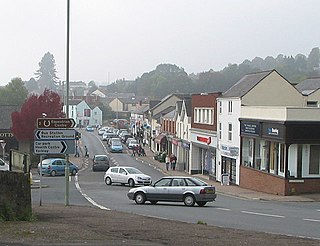
Lydney is a town and civil parish in Gloucestershire, England. It is on the west bank of the River Severn in the Forest of Dean District, and is 16 miles (25 km) southwest of Gloucester. The town has been bypassed by the A48 road since 1995. The population was about 8,960 in the 2001 census, reducing to 8,766 at the 2011 census. Increasing to 10,043 at the 2021 Census.

Forest of Dean is a local government district in west Gloucestershire, England, named after the Forest of Dean. Its council is based in Coleford. Other towns and villages in the district include Blakeney, Cinderford, Drybrook, English Bicknor, Huntley, Littledean, Longhope, Lydbrook, Lydney, Mitcheldean, Newnham and Newent.

The Dean Forest Railway is a 4+1⁄4-mile (6.8 km) long heritage railway that runs between Lydney and Parkend in the Forest of Dean, Gloucestershire.

Alton is a civil parish in Wiltshire, England. The parish includes the adjacent villages of Alton Barnes and Alton Priors, and the nearby hamlet of Honeystreet on the Kennet and Avon Canal. It lies in the Vale of Pewsey about 6 miles (10 km) east of Devizes.
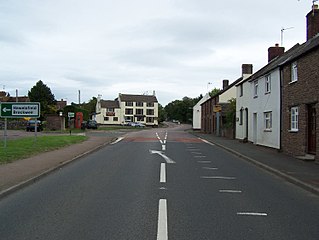
Alvington is a village and civil parish in the Forest of Dean in Gloucestershire, England, situated on the A48 road, six miles north-east of Chepstow in Wales. The parish had a total population of 506 at the 2011 census.

Admiral Sir William Wynter held the office of Surveyor and Rigger of the Navy for 40 years, from 1549 until his death in 1589, and combined that with the office of Master of Navy Ordnance from 1557. He was an admiral and principal officer of the Council of the Marine under Queen Elizabeth I of England and served the crown during the Anglo-Spanish War (1585–1604). He was returned four times to parliament in Elizabeth's time.

Lydney Park is a 17th-century country estate surrounding Lydney House, located at Lydney in the Forest of Dean district in Gloucestershire, England. It is known for its gardens and Roman temple complex.

Kelvedon Hatch is a village and civil parish in the Borough of Brentwood in south Essex, England. It is situated just north of Pilgrims Hatch, approximately 4 miles (6.4 km) to the north of Brentwood and is surrounded by Metropolitan Green Belt. In 2019 the built up area had an estimated population of 2,434. The parish had a population of 2,563 in 2001, reducing to 2,541 at the 2011 Census and climbed back up to 2,631 in 2021.

Pidcock's Canal was a canal in Gloucestershire, England, which connected ironworks at Upper Forge and Lower Forge, and also ran to an inlet from the River Severn called Lydney Pill. It was constructed from 1778 onwards, and there were three locks below Middle Forge. Following the construction of the Lydney Canal in 1813, the canal connected to that, rather than Lydney Pill, and it was disused after 1840, by which time a horse-drawn tramway had been built up the valley of The Lyd. The tramway was eventually relaid as a steam railway and is now preserved as the Dean Forest Railway. Most of the canal, colloquially called The Cut, still exists below Middle Forge.
Sharpness railway station served the village and docks of Sharpness in Gloucestershire, England from 1875 to 1964.
Sir James Altham, of Oxhey, Hertfordshire, was an English judge, briefly a member of the Parliament of England, and a Baron of the Exchequer. A friend of Lord Chancellor Francis Bacon, Altham opposed Edward Coke but advanced the laws of equity behind the fastness of the Exchequer courts, so long considered almost inferior. Through advanced Jacobean royalism he helped to prosecute the King's enemies and centralise royal power of taxation. With Sir Edward Bromley, he presided at the Lancashire witch trials in 1612.
Sir Edward Wynter or Wintour was an English mariner and landowner who sat in the House of Commons at various times between 1587 and 1601. He developed the iron workings around the family estates at Lydney in the Forest of Dean, which in his son's time were of importance to the Royalist cause. His marriage to Lady Anne Somerset produced a strongly Roman Catholic allegiance among his children.
Sir John Winter also spelt Wintour and Wyntour was an English ironmaster and landowner at Lydney in Gloucestershire, who was an ardent supporter of Charles I during the English Civil War.
The Court House is a grade I listed house in Hale Lane, Painswick, Gloucestershire, England, within the Cotswolds.
Vice-Admiral Sir John Wynter or Winter (1555–1638) was an explorer and naval officer in the English Navy Royal. As a ship's captain in the Drake expedition of 1577-1580, he was the first European to cross the Strait of Magellan from west to east.

Lydney Town Hall is a municipal structure in the High Street, Lydney, Gloucestershire, England. The structure, which is used as an events venue, is listed by the local authority as a "building of local architectural or historical interest".
References
- ↑ "Lydney Pages 46-84 A History of the County of Gloucester: Volume 5, Bledisloe Hundred, St. Briavels Hundred, the Forest of Dean". British History Online. Victoria County History. Archived from the original on 21 April 2021. Retrieved 2 May 2021.
- ↑ Kaufmann, Miranda (2017), Black Tudors, Oneworld Publications, p. 1.
- ↑ "Lydney | British History Online". Archived from the original on 25 July 2019. Retrieved 10 November 2019.
51°43′23″N2°32′06″W / 51.723°N 2.535°W